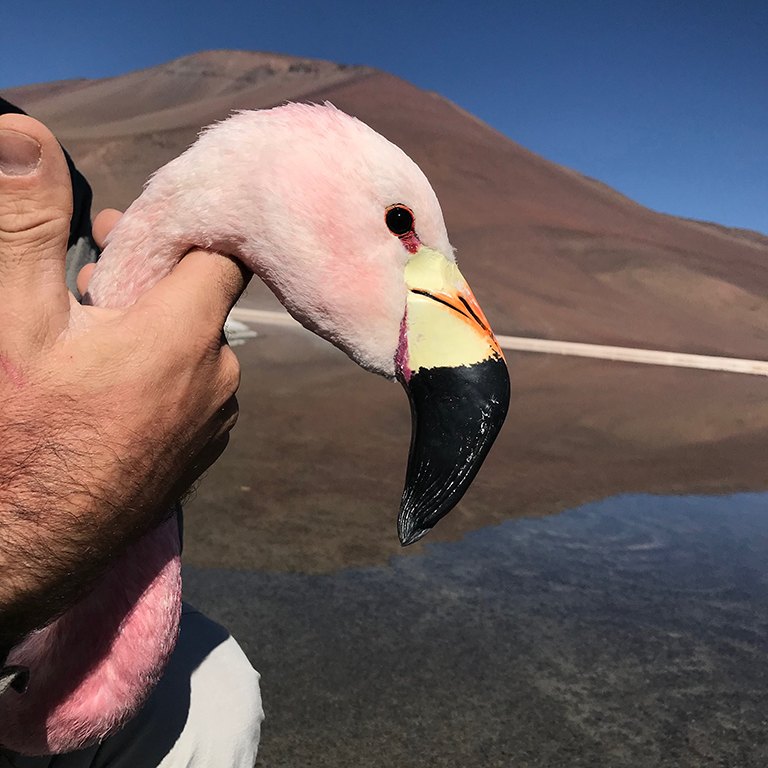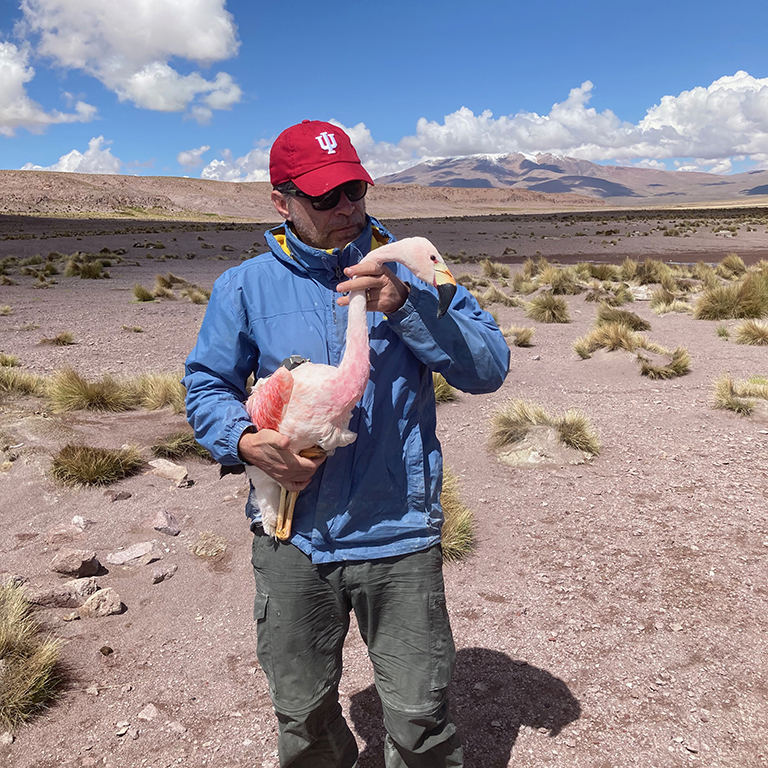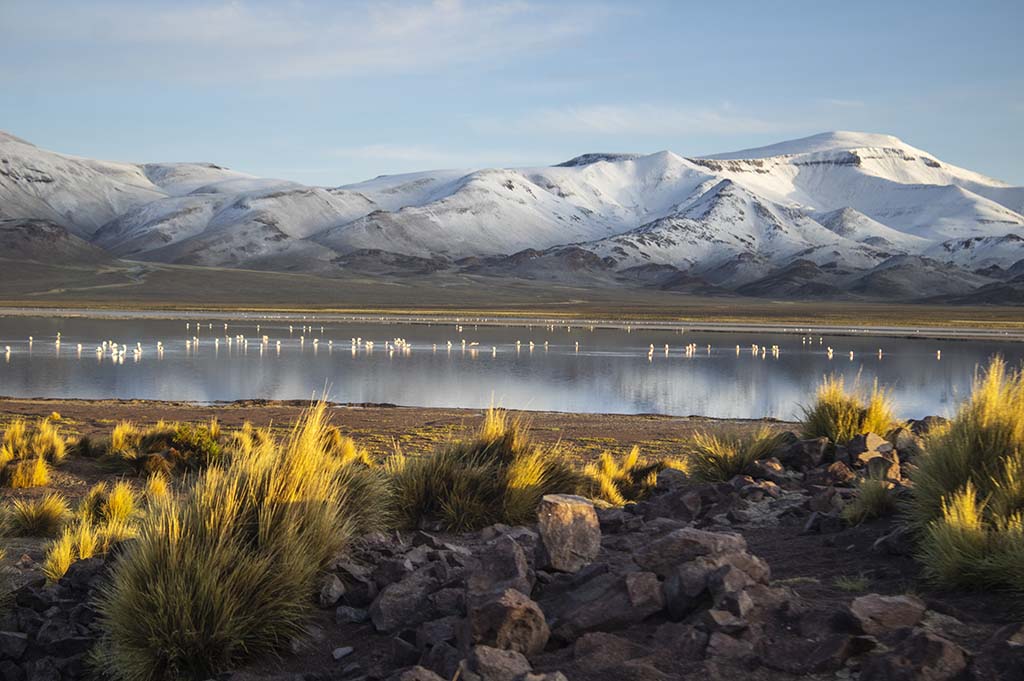Each summer, the rarest flamingos in the world congregate in the Andean highlands of Chile, Argentina, and Bolivia to feed in the region’s desert lakes. Amidst the vast expanses of salt flats, sparse vegetation, and austere snow-covered mountains, the bright pink Andean flamingo lends a surreal presence to an otherworldly landscape.
But even at 14,000 feet above sea level, the long-legged birds face threats from human encroachment and climate change. It’s estimated that there are fewer than 80,000 Andean flamingos, and a recent study conducted in Chile found that Andean flamingos are negatively impacted by lithium mining activities, which disturb the skittish birds and draw from scarce groundwater resources that drain nearby saltwater lakes.
To better understand Andean flamingos and how to protect them, Indiana University researcher Alex Jahn, a research scientist in the Department of Biology and former research fellow with the Environmental Resilience Institute, is tracking the birds to find out where they go and why.
“Flamingos are nomads. Nobody knows where a given Andean flamingo spends the year,” said Jahn. “Andean flamingos spend the brief Andean summer breeding in highland lakes, then mostly disappear until the following spring. They might go east one year and west the next, moving hundreds of miles between lakes. They need a shallow body of water to wade in and find zooplankton, their primary food source. What we’re trying to do is get a better understanding of how individual flamingos move, their migration routes, winter destinations, and habitat needs.”



 The College of Arts
The College of Arts